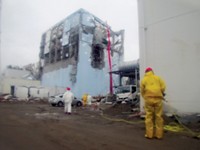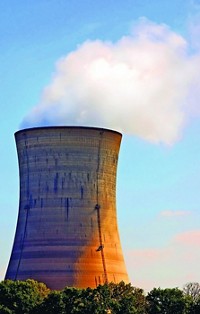Advertisement
Grab your lab coat. Let's get started
Welcome!
Welcome!
Create an account below to get 6 C&EN articles per month, receive newsletters and more - all free.
It seems this is your first time logging in online. Please enter the following information to continue.
As an ACS member you automatically get access to this site. All we need is few more details to create your reading experience.
Not you? Sign in with a different account.
Not you? Sign in with a different account.
ERROR 1
ERROR 1
ERROR 2
ERROR 2
ERROR 2
ERROR 2
ERROR 2
Password and Confirm password must match.
If you have an ACS member number, please enter it here so we can link this account to your membership. (optional)
ERROR 2
ACS values your privacy. By submitting your information, you are gaining access to C&EN and subscribing to our weekly newsletter. We use the information you provide to make your reading experience better, and we will never sell your data to third party members.
Safety
Spotlight On Nuclear Power
Review: U.S. nuclear plants need stronger safeguards for catastrophic events, panel says
by Glenn Hess
July 18, 2011
| A version of this story appeared in
Volume 89, Issue 29

Tougher rules are needed to improve the safety of U.S. nuclear power facilities and to better protect the public from the type of disaster that occurred this spring at Japan’s Fukushima Daiichi nuclear energy plant, says a preliminary report released by the Nuclear Regulatory Commission (NRC) on July 12.
Nonetheless, the report recognizes that nuclear plants can be operated safely and declares that “a sequence of events like the Fukushima accident is unlikely to occur in the U.S.” However, it adds that a U.S. nuclear power “accident involving core damage and uncontrolled release of radioactivity to the environment, even one without significant health consequences, is inherently unacceptable.”
A “patchwork” of existing regulations developed over the decades should be replaced with a “logical, systematic, and coherent regulatory framework” to further bolster reactor safety in the U.S., according to the report, which was prepared by a task force of nuclear power experts. NRC ordered the panel’s 90-day review of the safety and level of emergency preparedness of the 104 U.S. nuclear reactors after Japan’s March 11 earthquake and tsunami triggered an ongoing nuclear crisis.
Plant operators in the U.S., the report continues, should reevaluate and upgrade, if necessary, protections against earthquakes and floods; secure backup power and instrumentation to monitor and cool spent-fuel pools after a natural disaster; and ensure that emergency plans address prolonged station blackouts and events involving multiple reactors at a single site.
Rep. Edward J. Markey of Massachusetts, the top Democrat on the House Natural Resources Committee and a longtime critic of the nuclear power industry, urged NRC to move quickly to adopt the task force’s recommendations. “America’s nuclear fleet remains vulnerable to a similar disaster,” he says.
But Sen. James M. Inhofe (R-Okla.), the Environment & Public Works Committee’s ranking member, cautions against sudden, sweeping regulatory revisions. “Changes in our system may be necessary,” he says, but “a nuclear accident in Japan should not automatically be viewed as an indictment of U.S. institutional structures and nuclear safety requirements.”
The short-term review will be followed by a more in-depth analysis by the task force. That report is due in January 2012.




Join the conversation
Contact the reporter
Submit a Letter to the Editor for publication
Engage with us on Twitter